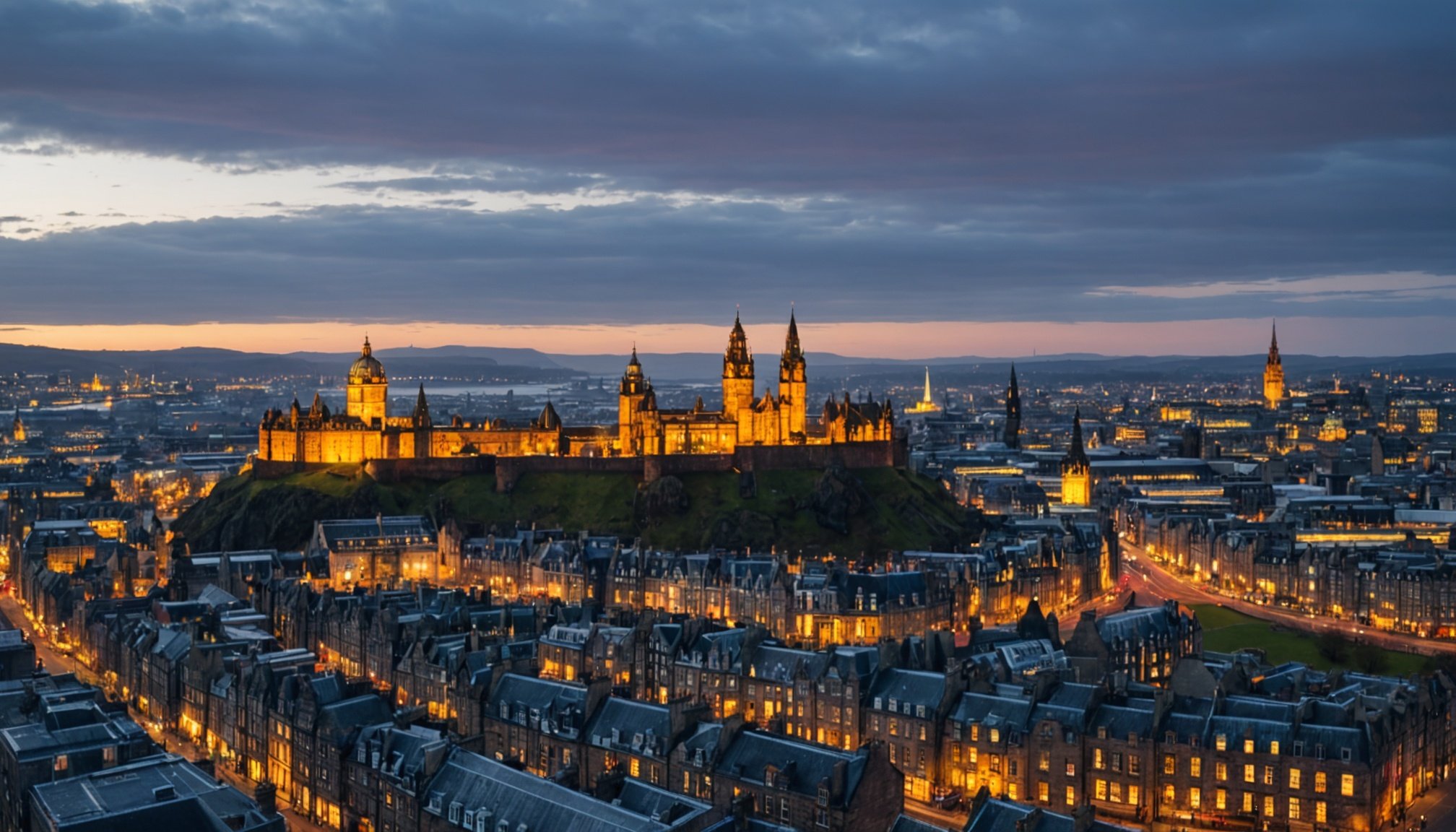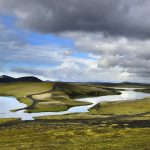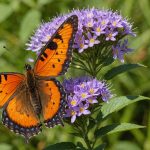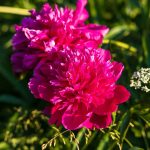Edinburgh's skyline is a breathtaking tapestry of historic architecture and natural beauty. Capturing its essence requires more than just a camera; it demands an understanding of light, angles, and timing. From the iconic Edinburgh Castle to the enchanting Arthur's Seat, this city presents unique opportunities for stunning photography. Discover actionable tips to refine your technique and create images that resonate with the spirit of this remarkable city. Your journey to mastering Edinburgh's skyline starts here.
Essential Photography Techniques for Edinburgh's Skyline
Capturing the Edinburgh skyline requires a blend of artistry and technical skill. Understanding essential photography techniques is crucial to producing captivating shots. The city's skyline is a tapestry of historic and modern architecture, demanding a keen eye for detail and composition.
Also to discover : Mastering the London Underground: A Parent”s Guide to Traveling with Toddlers
A successful skyline photograph hinges on mastering the interplay of lighting and weather conditions. Edinburgh's weather can be unpredictable, with dramatic shifts that can either enhance or hinder your photography. For instance, a cloudy day might soften the city's rugged outlines, while a clear sunset can cast a golden glow over the skyline. Knowing how to adapt to these conditions is vital.
Adjusting your camera settings is another critical factor. Utilize a narrow aperture to ensure a deep depth of field, keeping both foreground and background elements in sharp focus. A low ISO setting can reduce noise, essential for capturing the intricate details of Edinburgh's architectural wonders. Additionally, using a tripod can stabilize your shots, especially in low-light conditions, ensuring clarity and precision.
Have you seen this : How to arrange a bespoke photography tour of the Scottish Highlands?
By combining these techniques, photographers can capture the unique essence of Edinburgh's skyline, creating images that are both technically sound and visually stunning.
Best Times to Capture Edinburgh's Skyline
Timing is everything when it comes to capturing Edinburgh's skyline. The ideal shooting times are during the Golden Hour, which occurs shortly after sunrise and before sunset. This period offers soft, warm lighting that enhances the city's architectural features, casting long shadows and adding depth to your photographs.
Shooting during sunrise provides the advantage of fewer crowds and a serene atmosphere, allowing you to focus on composition without distractions. The morning light can lend a fresh and tranquil feel to your images. On the other hand, sunset offers rich, golden hues that can make the skyline appear majestic and dramatic.
Seasonal variations also play a significant role in skyline photography. In summer, the extended daylight hours give you more time to experiment with different angles and perspectives. Winter, with its shorter days, offers a unique opportunity to capture the skyline against a backdrop of early evening lights.
Additionally, planning around local events or festivals can result in truly unique shots. Edinburgh's festivals often incorporate vibrant lighting displays and fireworks, providing photographers with a chance to capture the skyline in a festive and dynamic setting.
Top Locations for Skyline Photography in Edinburgh
Exploring Edinburgh's photography locations reveals a rich tapestry of scenic views, each offering unique perspectives on the city's skyline. Among the most popular viewpoints is Calton Hill, renowned for its panoramic vistas of the city. Easily accessible from the city centre, it provides a perfect blend of historical monuments and sweeping skyline views, making it a favourite among photographers.
For those seeking a more adventurous climb, Arthur's Seat offers a dramatic vantage point. This ancient volcano, located in Holyrood Park, rewards photographers with breathtaking views of Edinburgh, especially during sunrise or sunset. The hike can be challenging, but the stunning scenery is well worth the effort.
Lesser-known spots also offer unique perspectives. The Vennel, a charming alleyway in the Grassmarket area, frames the skyline beautifully with Edinburgh Castle as a backdrop. Additionally, Inverleith Park provides a tranquil setting with unobstructed views of the skyline, ideal for capturing the city's essence without the crowds.
When considering accessibility and convenience, each location offers different levels of ease. While Calton Hill and Inverleith Park are more accessible, Arthur's Seat requires a bit more planning and physical effort.
Composition Techniques for Skyline Photography
Mastering composition techniques is essential for capturing the beauty of Edinburgh's skyline. One fundamental approach is the rule of thirds. By dividing your frame into a grid of nine equal parts, you can position key elements along these lines or their intersections, creating a balanced and engaging composition. This technique draws the viewer’s eye naturally to the focal points of your photograph, enhancing the overall impact.
Incorporating leading lines can also add a dynamic element to your skyline shots. These lines guide the viewer's gaze through the image, often starting from the foreground and leading towards the skyline. Streets, bridges, or even the curvature of a building can serve as effective leading lines.
Photography framing is another powerful tool. Use elements such as arches, trees, or architectural details to frame your subject. This not only adds depth but also focuses attention on the skyline itself.
To create depth and interest, consider layering elements within your shot. By including foreground, middle ground, and background elements, you can give your photograph a three-dimensional quality, making it more visually appealing and immersive.
Recommended Photography Equipment for Skyline Shots
To capture Edinburgh's skyline in all its glory, having the right photography equipment is crucial. The foundation of any skyline photography setup is a reliable camera body. While DSLRs and mirrorless cameras are both excellent choices, the latter offers a more compact design, which can be advantageous during long photo sessions.
Camera gear also includes the lenses you choose. For wide-angle shots that encompass the entire skyline, a lens with a focal length of 16-35mm is ideal. This allows you to capture expansive views without distortion. Conversely, a telephoto lens, such as a 70-200mm, is perfect for isolating specific architectural details or distant landmarks.
A sturdy tripod is indispensable in skyline photography. It stabilizes your camera, especially in low-light conditions, allowing for longer exposures without blur. Additionally, filters, such as neutral density (ND) or polarizing filters, can enhance your images. ND filters help manage exposure during bright conditions, while polarizing filters reduce glare and enhance color saturation.
Investing in quality photography equipment not only improves the technical quality of your images but also expands your creative possibilities, enabling you to experiment with different perspectives and compositions.
Post-Processing Tips for Skyline Images
After capturing the perfect shots of Edinburgh's skyline, photo editing becomes essential to enhance and refine your images. Post-processing techniques can transform a good photo into a stunning masterpiece, highlighting the city's architectural beauty.
Basic Editing Techniques
Start with basic adjustments such as cropping to improve composition and removing any distractions. Adjust exposure and contrast to bring out details in both the shadows and highlights. Enhancing clarity and sharpness can further define the intricate elements of the skyline.
Recommended Editing Software
For beginners, software like Adobe Lightroom offers user-friendly interfaces with powerful tools for basic and advanced edits. Professionals might prefer Adobe Photoshop for its extensive capabilities, allowing for detailed retouching and creative effects. Both programs support RAW files, preserving image quality during edits.
Balancing Colors and Highlights
Achieving dramatic effects often involves balancing colors and highlights. Adjust the white balance to ensure accurate color representation, especially important for capturing the natural hues of sunrise or sunset. Use the vibrance and saturation tools to enhance colors subtly, avoiding oversaturation. Highlights and shadows adjustments can add depth, making the skyline appear more dynamic and engaging.
By mastering these photo editing techniques, photographers can elevate their skyline images, capturing Edinburgh’s essence with precision and creativity.
Understanding Edinburgh's Unique Skyline Characteristics
Edinburgh's skyline is a captivating blend of architectural styles that reflect its rich history. From the medieval structures of the Old Town to the Georgian elegance of the New Town, the city offers a visual feast for photographers. The Edinburgh architecture is a testament to its past, with iconic features such as the Edinburgh Castle perched atop Castle Rock, providing a dramatic focal point.
The city's history plays a significant role in shaping its skyline. The juxtaposition of ancient and modern buildings tells the story of Edinburgh's evolution over centuries. This dynamic blend creates an intriguing contrast that is both challenging and rewarding to capture in photographs.
Seasonal changes further influence the skyline's appearance. In spring, the city is adorned with blooming flowers, adding vibrant colours to the scene. Autumn brings a palette of warm hues, enhancing the architectural details. Winter's shorter days and occasional snowfall can create a stark yet enchanting backdrop for the skyline.
Understanding these skyline features and their interplay with Edinburgh's history and seasons allows photographers to better capture the essence of this iconic cityscape, creating images that resonate with its unique character.
Local Photography Ethics and Guidelines
When capturing Edinburgh's skyline, understanding photography ethics and local guidelines is essential. Respecting public spaces and private properties is crucial. Always seek permission when photographing private areas or individuals, ensuring you respect their privacy and rights. This approach fosters a positive relationship with the community and maintains the integrity of your work.
Understanding Local Regulations
Familiarize yourself with local regulations regarding photography in Edinburgh. Some areas may have restrictions, especially those of historical or cultural significance. Check for any signage indicating photography rules, and adhere to these guidelines to avoid any legal issues or conflicts. Being informed about these regulations ensures a smooth and respectful photography experience.
Best Practices for Engaging with Locals
Engaging with locals can enrich your photography journey. Approach interactions with politeness and curiosity, showing genuine interest in their culture and stories. This not only enhances your understanding of the location but also opens up opportunities for unique photographic insights. By following these best practices, photographers can capture Edinburgh's essence while respecting its community and cultural heritage.
Visual Examples of Captured Skylines
Visual inspiration can be a powerful tool for photographers seeking to capture the essence of Edinburgh's skyline. By examining photography examples, one can gain insight into the diverse styles and techniques that bring the city's architectural beauty to life. These examples showcase the successful application of various composition techniques, lighting conditions, and equipment choices.
Showcase of Successful Skyline Shots
- A breathtaking shot from Calton Hill, using the rule of thirds to balance the cityscape with the sky, highlights Edinburgh's historic monuments against a vibrant sunset.
- A dynamic photograph taken from Arthur's Seat employs leading lines from the surrounding landscape to draw the viewer's eye towards the city centre, creating a sense of depth and movement.
- An intimate capture from the Vennel frames Edinburgh Castle, utilizing foreground elements to add a three-dimensional quality to the scene.
Encouragement for Reader Participation
Photographers are encouraged to experiment with these techniques and share their own skyline captures. By doing so, they can contribute to a community of visual inspiration, exchanging ideas and techniques that celebrate Edinburgh's unique skyline. Sharing personal work not only fosters creativity but also provides valuable feedback and learning opportunities.
Further Resources and Community Engagement
To enhance your skyline photography skills, exploring various photography resources is beneficial. Recommended books such as "Understanding Exposure" by Bryan Peterson offer insights into mastering camera settings and composition. Online courses on platforms like Coursera and Udemy provide structured learning paths, covering everything from basics to advanced techniques in photography.
Engaging with the local photography community in Edinburgh can also enrich your experience. Joining local photography groups and attending meetups allows you to connect with fellow enthusiasts, share knowledge, and gain inspiration. These gatherings often include photo walks and workshops, offering practical opportunities to improve your skills while exploring Edinburgh's stunning skyline.
Online platforms are invaluable for sharing and critiquing your work. Websites like Flickr and 500px allow photographers to showcase their images and receive feedback from a global audience. Engaging in these communities helps you refine your style, learn from others, and stay updated on the latest trends in skyline photography.
By utilizing these resources and engaging with the community, photographers can continue to grow and develop their craft, capturing Edinburgh’s skyline with creativity and precision.
















